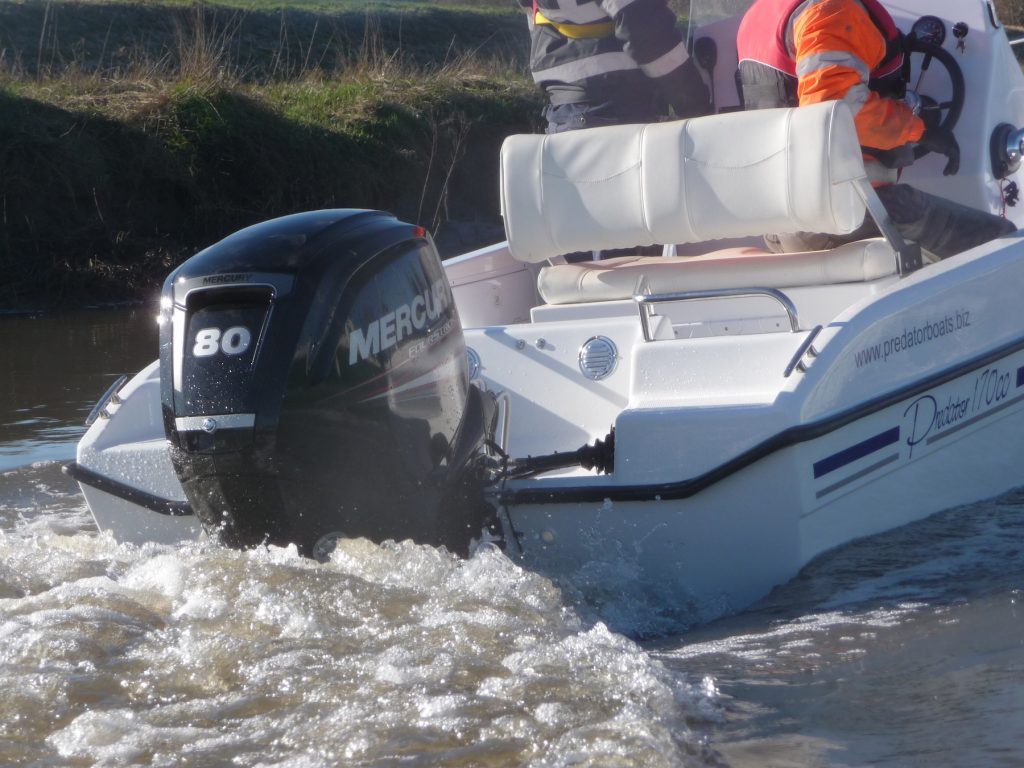Outboard Motor Flushing
by Ray Jackson
Why Flush?
Outboard motor manufacturers often recommend flushing their engines with clean water after each use, but this is especially important if your outboard has been used in seawater or brackish water, the salt in which corrodes the aluminium of the outboard from the inside. Over time, the products of corrosion can build up in the engine’s waterways, reducing the flow of cooling water to cause over-heating. Using the engine in sandy, silty or muddy fresh water also demands regular flushing, for obvious reasons.
Garden Hose Flushing Attachments
Most outboard motor manufacturers now offer an optional garden hose adaptor, or ‘flush plug’, which screws into the outside of the engine and enables a garden hose with a ‘hose-lock’ type fitting to be connected. Personally, I never use these attachments because of the potential to over-pressurise the engine’s cooling system. Do this, and you’ll be forcing water into parts of the engine where it shouldn’t be, which can cause serious engine damage. Of course this won’t happen if you observe the manufacturer’s maximum recommended water pressure (usually around 40 psi), but who keeps a water pressure gauge on their garden hose?
The one advantage of using a ‘flush plug’ is that flushing can be carried out without the need to run the engine (indeed, with some outboard models, the engine must not be run), so they are widely used, but not by me!
Flush Muffs
In my view, for what that’s worth, flush muffs are the way to go. They’re widely available, inexpensive, and easy to use. Simply connect the flush muffs to a garden hose, fit the muffs over the engine’s cooling water intakes, and turn on the water before starting the engine. Some water should continue to leak out from around the cups while the engine is running, but open the tap too much and the flush muffs are likely to blow off with the pressure.
Using flush muffs is straight forward, but here are a few points to watch for:
- NEVER leave the engine unattended while running on flush muffs, they slip off very easily and then, without cooling water, your engine will quickly overheat and seize! Make sure the flush muffs fully cover the water intakes and keep an eye on the engine’s tell-tail while the engine is running, just to confirm the engine is pumping water.
- The engine should be run in neutral, in the vertical position, at not more than 800 or 900 rpm (i.e. a fast idle speed).
- Run it for about 5 minutes to allow the engine to warm up and the internal thermostat to open. This ensures the whole system is flushed.
- Some engines have additional water intakes that will not be covered by the flush muffs. These need to be sealed with duct tape, but don’t forget to remove the tape when you’re finished!
- Some engines (often the smaller ones) have water intakes that are not suitable for flush muffs. These outboards need to be run in a small drum of water (which is kept topped-up with a garden hose) or using a flush bag. You should really remove the propeller for this.
- Ensure all the water is thoroughly drained from the engine when you’ve finished, especially if the outboard is being laid-up for winter. If not, the water could freeze, causing serious damage. Most engines need to be left in the vertical position to drain.
Flush Bags and Drums
A flush bag is a heavy plastic bag, with a supporting framework, designed to fully enclose the lower part of the outboard leg, and a garden hose attachment is provided to secure a hose to the flush bag. With flush bags, as with drums, the hose needs to be running sufficiently to keep the water topped-up while the engine is running.
Most of the points to watch for under flush muffs (above), apply equally to flush bags and drums but, in addition:
- Make sure the flush bag is big enough for your outboard.
- Remove the propeller and only run the engine in neutral.
- Don’t leave the engine running unattended, make sure the water remains above the outboard’s water intakes.
Please note: These suggestions apply, more or less, to most outboard engines, but some engine manufacturers have very specific instructions on how their engines should be flushed. For this reason, you should check the instructions for your particular outboard motor before beginning.




